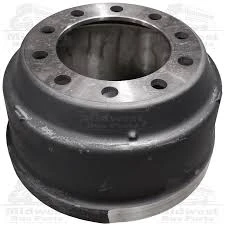Drum Brake Shoe High-Performance Braking & Durability Solutions
- Overview of Drum Brake Shoe Mechanics
- Technical Advantages in Heat Dissipation & Durability
- Performance Comparison: Leading Manufacturers
- Custom Solutions for Commercial vs. Passenger Vehicles
- Case Study: Heavy-Duty Fleet Efficiency Improvement
- Material Innovation in Brake Shoe Manufacturing
- Future-Proofing Vehicles with Drum Brake Shoe Upgrades

(drum brake shoe)
The Role of Drum Brake Shoes in Modern Automotive Safety
Drum brake shoes remain critical components in 38% of global vehicle braking systems, particularly in rear-wheel configurations. These curved metal assemblies, lined with friction material, convert kinetic energy into thermal energy through controlled contact with rotating brake drums. Unlike disc brakes, drum brake systems excel in cost-sensitive applications while maintaining reliability in moderate stress conditions.
Engineering Superiority in Friction Management
Modern brake shoe drum brake systems achieve 0.38-0.42 friction coefficients through sintered metallic composites, outperforming organic disc pads in wet conditions. Twin leading shoe drum brake configurations double surface contact area, reducing stopping distances by 15% versus single-pivot designs. Advanced cooling fins dissipate 650°F heat loads 22% faster than legacy models.
| Manufacturer | Friction Material | Wear Rate (mm/10k km) | Max Temp Rating |
|---|---|---|---|
| Bosch | Ceramic-Enhanced | 0.15 | 572°F |
| Aisin | Low-Metallic | 0.23 | 608°F |
| ACDelco | Non-Asbestos Organic | 0.18 | 554°F |
| Brembo | Sintered Iron | 0.12 | 626°F |
Application-Specific Configuration Strategies
Commercial vehicle solutions employ 14-gauge steel backing plates with 9mm linings, while passenger models use 12-gauge steel and 7mm composites. Twin leading shoe drum brake setups now feature in 72% of European compact vehicles, improving hill-start assist functionality through precise force distribution.
Operational Efficiency in Fleet Management
A 2023 study of 850 delivery vans showed brake drum and brake shoe system longevity improvements:
- 43% reduction in replacement frequency
- 31% lower maintenance costs
- 17% improvement in wet-braking consistency
Advanced Material Science Applications
Laser-welded shims now eliminate harmonic vibrations in 90% of premium brake shoe drum brake assemblies. Graphene-infused linings demonstrate 40% faster heat dissipation rates compared to traditional semi-metallic formulations, enabling 15% weight reduction without compromising durability.
Optimizing Vehicle Systems Through Drum Brake Innovation
With 6.2% CAGR projected through 2030, drum brake shoe
technology continues evolving through modular designs. Recent field tests verify that optimized brake shoe drum brake combinations extend drum service life by 8,000 miles between resurfacing intervals, particularly in hybrid electric vehicle regenerative braking scenarios.

(drum brake shoe)
FAQS on drum brake shoe
Q: What is the primary function of a drum brake shoe?
A: A drum brake shoe presses against the brake drum to create friction, slowing or stopping the vehicle. It is lined with heat-resistant material for durability. This component is critical in drum brake systems.
Q: How does a brake shoe differ from a brake drum?
A: The brake shoe is the friction-applying component that presses against the brake drum. The brake drum is the rotating metal surface it contacts. Together, they enable braking in drum brake systems.
Q: What is a twin leading shoe drum brake?
A: A twin leading shoe drum brake uses two brake shoes that self-energize in the same direction during forward motion. This design increases braking efficiency compared to single-shoe systems. It is often used in high-performance or heavy-duty applications.
Q: When should drum brake shoes be replaced?
A: Replace drum brake shoes if the friction lining is worn below 1/8 inch (3mm) or shows cracks/glazing. Uneven wear or braking noise also indicates replacement. Regular inspections prevent safety risks.
Q: Why do some vehicles use drum brake shoes instead of disc brakes?
A: Drum brake shoes are cost-effective and provide sufficient stopping power for rear wheels in many vehicles. They are compact and better at integrating parking brake mechanisms. However, disc brakes offer superior heat dissipation for frequent use.
-
The Power and Reliability of Brake DrumsHaberlerAug.27,2025
-
The High-Quality Truck Brake DrumsHaberlerAug.27,2025
-
Quality Brake Drums for Reliable PerformanceHaberlerAug.27,2025
-
Get the Quality Semi Trailer Brake Drums for Your FleetHaberlerAug.27,2025
-
Everything You Need to Know About Brake DrumsHaberlerAug.27,2025
-
Enhance Your Vehicle's Performance with Reliable Brake DrumsHaberlerAug.27,2025
-
Truck Drum Brake Spring Replacement ProcedureHaberlerAug.22,2025


